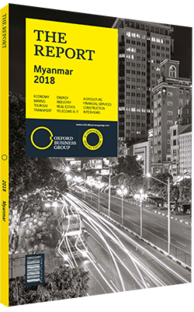Mai Trang Thanh, President, Honeywell Indochina: Interview

Interview: Mai Trang Thanh
Which sectors are ripe for foreign investment?
MAI TRANG THANH: Economic and political reform has captured the attention of foreign investors. With a young population, one of the largest landmasses in South-east Asia, vast natural resources and a GDP of about $66bn, the country is an exciting and dynamic frontier market with a variety of business opportunities.
Honeywell identified especially promising opportunities in oil and gas, city planning, household products and the aviation industry. In keeping with its reformist spirit, the government has announced expansion and upgrade plans for the country’s three international airports, as well as for another 30 domestic airports. In April 2017 the authorities also outlined 10 priority sectors for investment that will open up opportunities in the construction sector, which, despite the current slowdown, will remain an engine of economic growth.
Without losing sight of the available opportunities, investors are well aware of the challenges posed by Myanmar’s business environment. To attract investment, the government should develop a clear policy roadmap to boost the confidence of investors, and strengthen the rule of law and enforceability of contracts. Banking and financial services are another difficult area, but the situation in Myanmar is not very different from that of previous frontier markets in the region. On top of this, the country has to deal with challenges posed by an increasingly globalised, technologically developed world economy. Despite these difficulties, we remain confident that the country has the right conditions to keep growing in the years to come.
What opportunities do you see for investment in the local hydrocarbons industry?
TRANG THANH: Investment in the oil and gas sector is focused on the upstream side. As the country is a net producer of natural gas, the commodity plays a significant role in the primary energy market by supporting the trade balance and foreign exchange reserves. Some international oil and gas players are starting to consider new investments to develop Myanmar’s mid- and downstream sectors. This focus is being propelled by the rapid growth of energy demand from the residential, industrial and transport sectors. Myanmar is heavily reliant on fuel imports, and the key actors in oil and gas see investment opportunities in refining, especially after the temporary shutdown of some local refineries.
Hydrocarbons players are also seeking to leverage the country’s need to upgrade its energy infrastructure, including the pipeline network, warehousing and exploration technology. With improvements to internet infrastructure, Myanmar can deploy advanced connected solutions to improve all aspects of industrial operations, from supply chain efficiency to asset optimisation.
What changes can we expect to see in the construction sector in the coming years?
TRANG THANH: Though economic growth slowed in 2016 and early 2017, and the contribution of the construction industry in Yangon Region to GDP contracted to 5%, we still believe that the sector presents good opportunities for investors. According to experts, the industry was valued at $4.9bn in 2015 and is projected to grow at a compound annual growth rate of 11% until 2020, despite regulatory uncertainty and a lack of clarity surrounding certain policies.
We see plenty of underpenetrated areas that could see rapid development with the adoption of adequate policies. When we speak about better regulation, we are addressing the need of the country to bridge some of the gaps the sector has compared to more developed and sophisticated markets. In the years to come, we can expect improvements in local infrastructure and building construction, which will improve energy efficiency and safety. Local companies, investors and stakeholders will have to improve the efficiency of their operations and be on top of the latest technologies to enhance the experience of local consumers and property buyers.
You have reached the limit of premium articles you can view for free.
Choose from the options below to purchase print or digital editions of our Reports. You can also purchase a website subscription giving you unlimited access to all of our Reports online for 12 months.
If you have already purchased this Report or have a website subscription, please login to continue.

